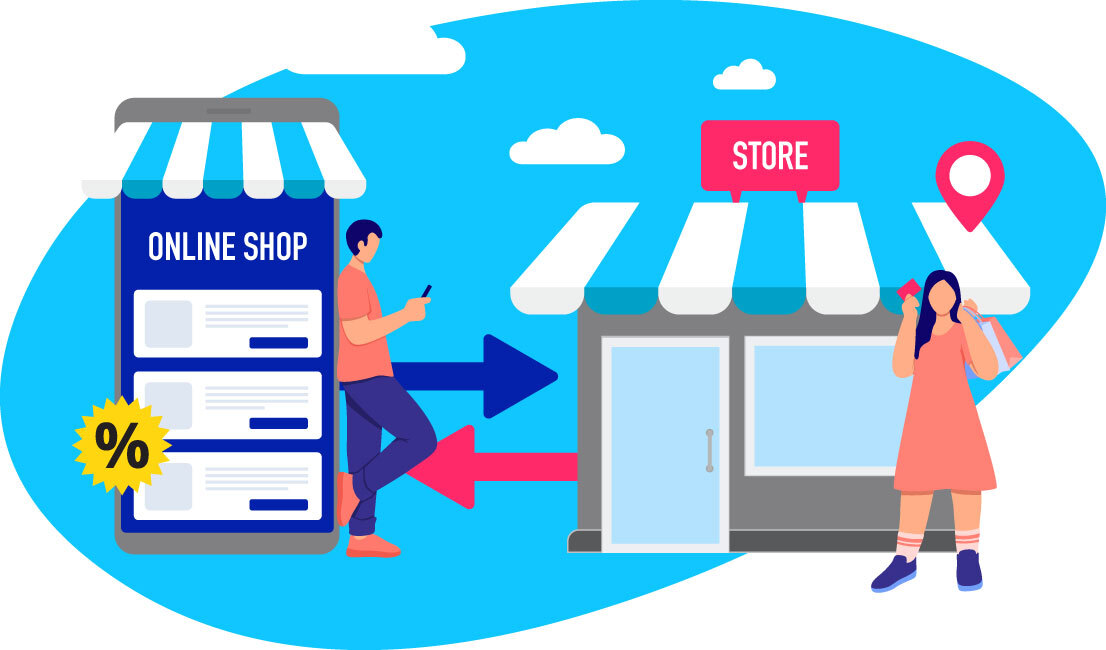7 min read
What Is Consumer Behavior?
Consumer behavior is the analysis of how consumers make decisions about what to buy, when to buy it, and how to do so. As well as purchasing behavior, it also involves how consumers think about various brands, how they choose between them, how they behave while deciding what to buy and how they are influenced by marketing campaigns, personal preferences, social and economic pressures and the wider culture.
Understanding consumer buying behavior is vital for marketers, as it sheds light on why consumers make the decisions they do. In turn, this will help marketers to understand which of their campaigns are more effective, and to more highly target their marketing spend in the future, increasing return on investment.
There are three types of human needs: basic needs (such as food, water, warmth and security), psychological needs (such as loving relationships) and self-fulfillment needs (reaching one’s full potential). When one of these needs isn’t being met, the consumer might decide that making a purchase will rectify this.
For example, maybe their running shoes have worn out, meaning they can’t exercise and so can’t meet their self-fulfillment needs of staying healthy, hence the search for a new pair.
Once they have recognized the problem (that their old product is no longer fit for purpose), they embark on an information search. In this case, it would mean searching the internet for running shoes, checking them out in-store, viewing ads, reading consumer reviews and getting advice from friends and acquaintances. Then they evaluate the alternatives, including brands, models and prices before making a purchase decision.
Finally comes post-purchase behavior – does the customer love the product, or hate it? And will they make their feelings known by writing a review or commenting on social media for other potential shoppers to see?
Different Types of Consumer Behavior
There are four main types of consumer behavior:
1. Complex buying behavior
This refers to buying infrequent, expensive products, like a house or a car. Because of the expense and emotional investment involved, consumers are highly involved in the purchasing process, and do extensive research.
Consider someone looking to purchase their first home. Buying a house is a significant, infrequent expense that involves immense emotional and financial investment. Such consumers typically engage in extensive research, exploring various neighborhoods, considering property types, analyzing financing options, and assessing their long-term needs.
The decision-making process is prolonged and intricate, involving consultations with real estate agents, financial advisors, and often seeking advice from family or friends. The level of involvement and thorough research are characteristic of complex buying behavior due to the high stakes and substantial commitment involved in the purchase.
2. Dissonance-reducing buying behavior
The consumer is still highly involved, but has difficulty choosing between brands and worries they may regret their choice.
Imagine someone shopping for a new laptop. They are highly involved in the process, researching various brands, specifications, and features extensively. However, despite their thorough investigation, they are still uncertain about which brand or model to choose. They fear they might regret their decision or miss out on a better deal. This uncertainty leads to a feeling of cognitive dissonance—a conflict between the desire for a good purchase and the worry of making the wrong choice.
In an attempt to reduce this dissonance, they may seek reassurance through reviews, comparison websites, or by consulting with tech-savvy friends to gain more confidence in their decision. Ultimately, their high involvement coupled with lingering doubts characterizes dissonance-reducing buying behavior.
3. Habitual buying behavior
With these purchases, the customer has little involvement in the product or brand category. These patterns are established over the long term, and typically involve low-cost items – for example, the type and brand of bread, soda and milk you buy.
Think of someone who regularly purchases a specific brand of soda. They have established a routine where they automatically reach for this particular brand without much thought or consideration. This behavior is ingrained over time; they hardly deliberate or actively compare alternatives when buying soda. It is a low-involvement, habitual purchase where the individual has become accustomed to a specific brand without actively engaging in the decision-making process. Similarly, their choice of bread or milk might also fall into this category—purchases made almost on autopilot due to ingrained habits, without much consideration of alternatives or brands.
4. Variety seeking behavior
Consumers sometimes change their purchasing behavior for no reason other than to try something new. They might be perfectly happy with their brand of coffee, for example, but just want to see what a different make is like.
Suppose, for instance, a person who regularly buys a specific brand of shampoo that works well for their hair. However, every few months, without any dissatisfaction with their current shampoo, they decide to switch to a different brand just to experience something new. They might have no particular issue with their current choice; instead, the desire for novelty and curiosity prompts them to explore other options available in the market.
Similarly, they might occasionally opt for a different type of coffee despite being content with their usual brand, just to sample a new flavor or blend. This behavior is driven by a desire for variety and the experience of trying something different rather than dissatisfaction with the existing product.
What Influences Consumer Behavior?
Many variables affect customer behavior. You can control some of these, but for some, you will just have to bear in mind if you want to understand consumer behavior and then influence it.
Marketing
Marketing campaigns can prompt customers to switch brands, stay loyal, and even start buying types of products and services that were previously alien to them.
Even beyond brand switching and loyalty, marketing shapes consumer perceptions by associating products with specific values or lifestyles, fostering emotional connections that transcend transactional relationships. Furthermore, in the digital sphere, personalized and targeted marketing via social media and online platforms leverages data-driven insights to tailor messages, influencing purchasing decisions by aligning offerings with individual preferences.
Personal purchasing power
Economic factors have a direct bearing on personal purchasing power. This affects everything from big ticket items like houses and cars right down to everyday buys like groceries.
For instance, during economic downturns or periods of high inflation, consumers might reevaluate their decisions regarding significant investments like houses or cars, opting for more affordable options or delaying purchases. Similarly, in times of economic prosperity or low-interest rates, individuals may feel more confident making substantial investments.
Moreover, fluctuating economic conditions can impact consumers’ ability to make everyday purchases like groceries and may prompt consumers to modify their shopping habits, opt for cheaper alternatives, or adjust their spending on non-essential items based on their perception of their financial stability. These economic fluctuations directly influence consumer decisions across the spectrum of purchases, guiding choices and shaping consumption patterns.
Personal choice
Each consumer has their own personal preferences in terms of tastes, morals, priorities and values. These are shaped by individual principles and values as well as the wider culture.
At an individual level, personal experiences, upbringing, and unique perspectives contribute to these preferences. For instance, one person may prioritize sustainability in their purchases due to environmental values, while another might prioritize convenience or cost-effectiveness. Additionally, personal tastes in fashion, food, entertainment, and lifestyle choices reflect individuality and diverse inclinations.
Beyond individual principles, these preferences are also embedded within the wider cultural context. Societal norms, traditions, and the prevailing cultural ethos significantly impact consumer preferences. Cultural values, such as collectivism versus individualism or societal emphasis on certain virtues, can influence product choices and consumption behaviors. For instance, in cultures valuing familial ties, products catering to family-oriented activities or gatherings might have higher demand.
Moreover, broader cultural shifts and trends, including technological advancements, globalization, and media influences, continuously shape and reshape consumer preferences. The exposure to diverse cultures through media, travel, and digital connectivity also contributes to the evolution of preferences, fostering an environment where individuals might adopt global trends while retaining elements of their cultural identity.
Peer pressure
The purchasing decisions of others in our social circle will also play a big part in determining customer behavior.
People often look to their social circles—friends, family, colleagues, or influencers—for guidance, validation, and cues when making buying choices. Observing the preferences, opinions, and purchasing behaviors of those within their social sphere significantly shapes an individual's own consumer decisions. This phenomenon, known as social influence, operates on various levels. It might manifest as direct recommendations from friends or family, where trust and familiarity sway decisions.
Additionally, social media and online platforms amplify this effect, allowing individuals to observe and emulate the consumption patterns of their peers or influencers they admire. Subconsciously, people tend to conform to the perceived norms or trends within their social groups, impacting everything from fashion and technology choices to dining preferences and lifestyle decisions.
The influence of social circles, whether through direct recommendations or subtle observation, serves as a powerful driver in shaping consumer behavior, often guiding individuals in their purchasing choices and preferences.
**Want to know what AI-powered solutions can better help you understand consumer behavior and make strategic decisions? Reach out to us now!



.jpg?width=2304&height=1354&name=Content_Blog_BB%20AI%20Click%20Optimization_Header%20(1).jpg)